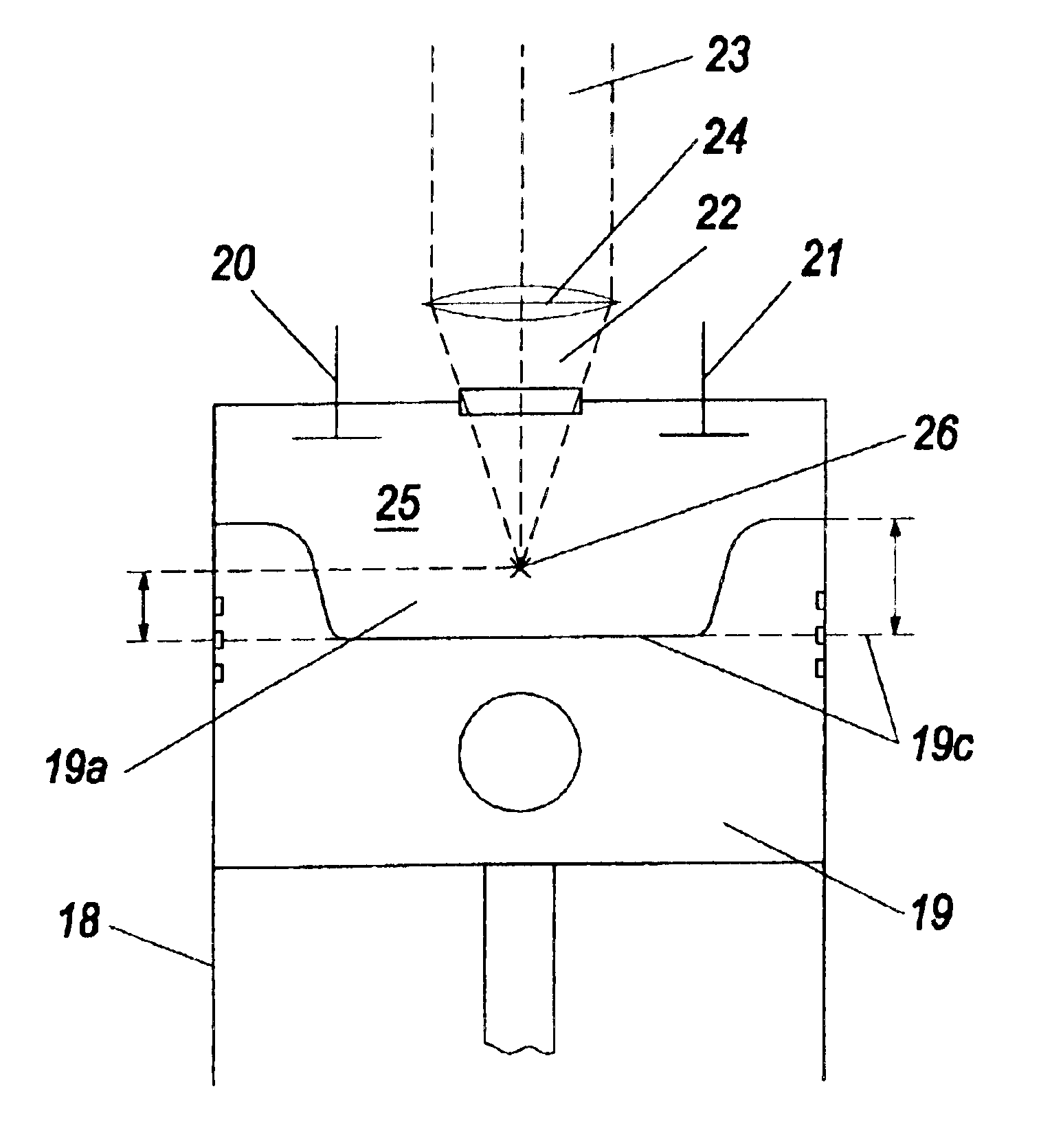Internal combustion engine
a combustion engine and internal combustion technology, applied in the direction of engine ignition, lasers, electrical equipment, etc., can solve the problems of unsatisfactory life value, electrode spacing has to be adjusted, and the life value of the spark plug is not satisfactory, so as to achieve reliable ignition and high spatial energy density
- Summary
- Abstract
- Description
- Claims
- Application Information
AI Technical Summary
Benefits of technology
Problems solved by technology
Method used
Image
Examples
Embodiment Construction
[0020]The internal combustion engine represented in FIG. 1 is a six-cylinder stationary gas Otto engine 1 with an inlet duct 2 and an exhaust duct 3. In a gas mixer 3, gas fed via the line 4, for example methane, is mixed with air fed via the line 5. Instead of a customary gas mixer, a nozzle can also be used to feed gas into an air line. The gas / air mixture is compressed via the turbocharger / compressor 6 and passes via the mixture cooler 7 and the throttle valve 8 into the chamber in front of the inlet valves, not shown in detail, of the engine 1. The turbine wheel 9 of the turbocharger is arranged in the exhaust line 3. In this respect the engine arrangement corresponds to the state of the art.
[0021]The novel feature is that the engine represented in FIG. 1 is run with a air / fuel ratio lambda (λ) of more than 1.9 and laser ignition means are provided for ignition. These laser ignition means comprise a laser light source generally numbered 10, an optical transmission apparatus cons...
PUM
 Login to View More
Login to View More Abstract
Description
Claims
Application Information
 Login to View More
Login to View More - R&D
- Intellectual Property
- Life Sciences
- Materials
- Tech Scout
- Unparalleled Data Quality
- Higher Quality Content
- 60% Fewer Hallucinations
Browse by: Latest US Patents, China's latest patents, Technical Efficacy Thesaurus, Application Domain, Technology Topic, Popular Technical Reports.
© 2025 PatSnap. All rights reserved.Legal|Privacy policy|Modern Slavery Act Transparency Statement|Sitemap|About US| Contact US: help@patsnap.com



